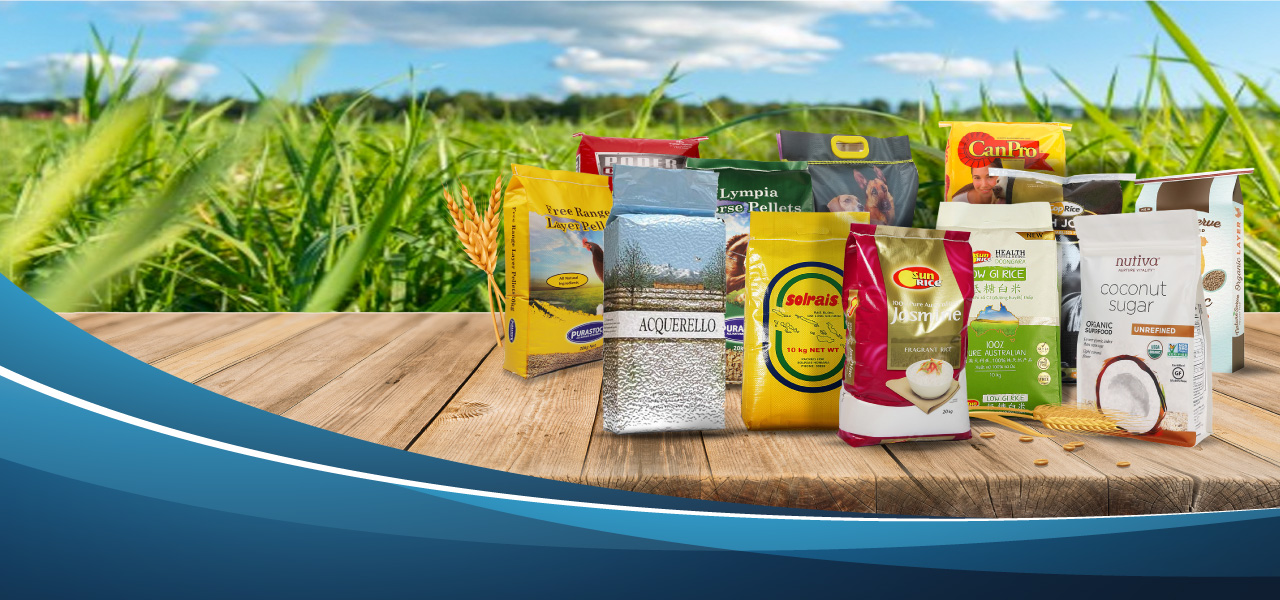Coffee bean packaging has been an early adopter of flexible packaging, but within this market, their packaging wishes have changed somewhat over the years. Some markets are very traditional and not very keen on changing their packaging concepts, forms, or designs.
However, innovative packaging design can do good help attract consumers also reinforce the first impression of consumers. During this article, we are going to discuss the style and design of coffee bean packaging and how can they attract consumers.

FOUR COMMON COFFEE BEANS BAG PACKAGING TYPES
While there is a wide range of coffee bags on the market, there are four types that each serve very different purposes.
# Stand-Up Pouches
The stand-up pouch is a very normal coffee bean packaging bag in the market, these bags are made of two panels and a bottom gusset, giving them a triangular shape. They also often feature a resealable zipper that can help keep the coffee fresher for longer, even once the bag has been opened. This combination of low prices and good quality makes stand-up pouches a popular choice among small- to medium-sized roasters.
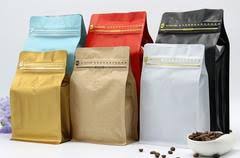
The bottom gusset also allows the bag to stand up on the shelf and there is plenty of room for branding. A talented designer can work with this style to create an eye-catching bag.
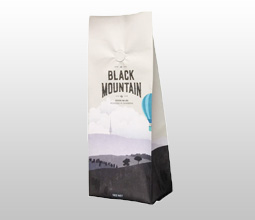
# Flat-Bottom Pouches
Its square design allows it to stand unassisted, giving it a prominent shelf presence and, depending on the material, a modern appearance. Besides, with its side gussets, it can hold more coffee in a smaller bag. In turn, this makes it more efficient to store and transport, and better for the environment.
The only downside to this bag is that it’s more complicated to make, so it tends to be a little pricier. Roasters need to weigh up the advantages in branding and freshness against the cost and decide if it is worth it for them.
# Side-Gusset Bags
This is a more traditional bag, and still one of the most popular. It’s also known as a side-fold bag. It is a strong, durable option well-suited to larger quantities of coffee. Most clients choose this style when they need to pack many grams of coffee, like 5 lb.
These types of bags tend to have a flat bottom, meaning they can stand on their own – when there’s coffee inside them. The empty bags can only do so if they have a folded bottom.

They are printable on all sides, making them easy to brand. They also tend to be less costly than other options. On the other hand, they don’t feature zippers. Usually, they are closed by rolling or folding them and using adhesive tape or a tin tie. Although they are easy to close this way, it’s important to remember that this is not as effective as a zipper and so coffee beans usually won’t stay fresh for as long.
# Flat Pouches
These bags come in many sizes, but they are most commonly seen as single-serve packaging. If roasters want to have a small bag, like a sample for their customers, they can choose this kind of bag.
Although these bags tend to be small, their entire surface can be printed on, offering good branding opportunities. However, keep in mind that this type of bag needs support in order to stay erect. You will need a platform or stand of some variety if you wish to display it on an exhibition booth, for example.
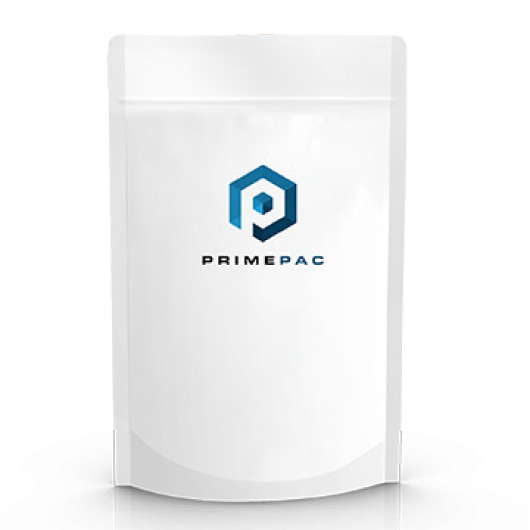
# BAG-IN-BAG (BIB)
Fractional packs of coffee can be packaged bag-in-bag into a larger package for foodservice or bulk sale purposes. Modern coffee packaging machines can form, fill, and seal the smaller frac packs and subsequently package those into a larger outer wrap on a single bag-in-bag machine.
Coffee bean packaging factors - Coffee freshness factors
Will your product be distributed to stores, cafes, businesses, or shipped to the end-users nation- or worldwide? If so, your coffee will need to stay fresh until the very end. To accomplish this, Modified Atmosphere Packaging (MAP) options can be used.
The most popular modified atmosphere packaging system is one-way degassing valves, which allows the natural build-up of carbon dioxide in freshly roasted coffee an escape route while not letting COFFEE FRESHNESS KILLERS like oxygen, moisture, or light inside the bag.
Other modified atmosphere packaging options include nitrogen gas flushing, which displaces oxygen in the coffee bag before filling, and the use of You can choose to use one type of MAP in your coffee bean packaging design or many, depending upon your needs. For most modern coffee packaging applications.
The coffee bean packaging process
Will you be hand-filling your coffee bags or are you considering automating with COFFEE BEAN PACKAGING EQUIPMENT? If you plan to hand-fill your coffee bags, we recommend you choose a bag style that has a wide enough top opening to accommodate your scoop or filling apparatus.
Also note that hand-packing, while it may have a lower cost to entry, seriously limits your throughput, accuracy, and ability to ramp up production at a moment’s notice. If you already use – or are considering purchasing – automated COFFEE BAGGING EQUIPMENT, your bag options are almost unlimited.
Most modern coffee packing machines can easily accommodate multiple bag styles and sizes. Fill weights are no longer a worry as automated filling solutions can operate at a high level of accuracy. Your throughput can increase by leaps and bounds and if you suddenly receive a large order, scaling your production up is no biggie.
The most noticeable coffee bean packaging trends:
#Sustainability
Many consumers are conscious of their purchases and the effect they have on the environment. Building trust with these consumers is done by reducing the impact the product and packaging have on the environment. And just as important, demonstrating this impact on the packaging itself! Earlier we gave the example of packaging concepts moving from aluminum to metalized PET.
#Premiumization
During the recession, convenience kept the instant market afloat. But the last few years have been good for the coffee market, and now we see instant coffee improving both the quality of their product and packaging to give sales and brand recognition a boost. For example, we see companies investing in better inks, lacquers, or varnishes.
#Marketing campaigns and their effect on packaging updates
Growing your brand can be difficult, particularly in the crowded coffee marketplace. One way brands choose to increase their market share is by offering variations on classic coffee products. We are also seeing more and more (short) branding campaigns that require frequent changes in packaging.
Coffee bean packaging convenience options:
Zippers
One of the most popular recloseable options, zippers means a consumer can reuse the product after opening. Zipper reclosures provide an effective barrier against staling.
Ties or tape
Popular in the coffee industry are tin tie and tape down closures. These reclosable options can be employed either independently or together on your coffee bean packaging machine. This choice is not as airtight as a zipper but is still a popular look for stand-up coffee packaging bags.
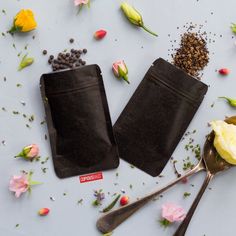
Minimal package design
Consumers are already overwhelmed with choices, visuals, and data. Make it easy for them to select your coffee with minimal use of graphics and bold, solid patterns in your coffee bag packaging design.
What else factors you need to consider about coffee bean packaging:
The Filling Process:
Bags with a small opening can take longer to open and fill than ones with wider openings. Whether you choose to fill your bags manually or with an automatic filling machine, make sure to analyze your processes and how much time this consumes.
A Degassing Valve:
Sealed bags without a valve usually inflate and can even explode. A degassing valve allows the carbon dioxide that roasted coffee releases to escape the sealed bags. It’s a one-way valve: carbon dioxide goes out, but oxygen doesn’t come in. However, keep in mind that your bags need to be completely sealed for this to be effective, so make sure to invest in a good heat sealer.
A Tear Notch:
It’s a simple addition that allows for better and quicker access to your product.
The Supplier:
Will your supplier give you genuine advice? What will happen if there is a problem? Choose a reliable supplier, you need to know more about their qualifications, visit their website through the Internet, be sure about the product quotation, and check the feedback from other customers and the quality of the product.
Design your coffee bean packaging
The design of packaging for your coffee beans starts with the structure of this bag.
It will determine how much information and details you can share on it, so you want to know what your product is.
If not, you need to highlight the properties of the coffee, such as fermentation characteristics, origin, and recommended brewing method.
If your coffee does not have any special quality, please mention it here.
There is a quality seal or certification mark because it can also imply a certain quality seal or certification mark, because there may be a certain quality seal or certification mark, and it can prove that they are from their place of origin.
You need to decide which information to choose and where, because your packaging has a lot of information to choose from.
Primepac has a stable outer flat-bottomed bag and an inner printable area. Internal printing adds an amazing element or can be used for the color of coffee beans that contrast with fermentation.
This may provoke customers to the color of other coffee bags. The curiosity of what was prepared for them.
Don’t forget about sustainable packaging
It is possible for modern packaging options to preserve the flavor and content displayed during the production process while considering the environment.
However, as Millennials and Gen Z continue to dominate the beverage market, their consumer interest in product labeling and packaging is increasing.
This is something you need to consider at every point, it can convey how your coffee is harvested and processed in your own way.
You can add a brief guide on how to properly dispose of the bag, or mention how to save money by recycling the bag.
Therefore, you can trust PrimePac
About PeimePac
At PrimePac, we bring together design experts and brand innovators to create fresh ideas, customized packages, and fully efficient processes.
We design creative packaging solutions that cater to a diverse global audience with the in-house knowledge and network of experienced professionals to meet the demands of every type of client.
From our dedicated sales team and warehouse staff in Australia to the experts at our production facilities in China, all of our employees are guided by four core values at the heart of our business: integrity, innovation, passion, and engagement.
Network
With our team in China and Australia working as one, we reduce inefficiency so that you deal with one streamlined team from manufacturing right to delivery.
Service support team located in Guangzhou, the manufacturing hub of China, providing rapid response, and local industry knowledge. Warehouse and 3PL net work located in Sydney, to provide rapid distribution, and delivery to your customers.
